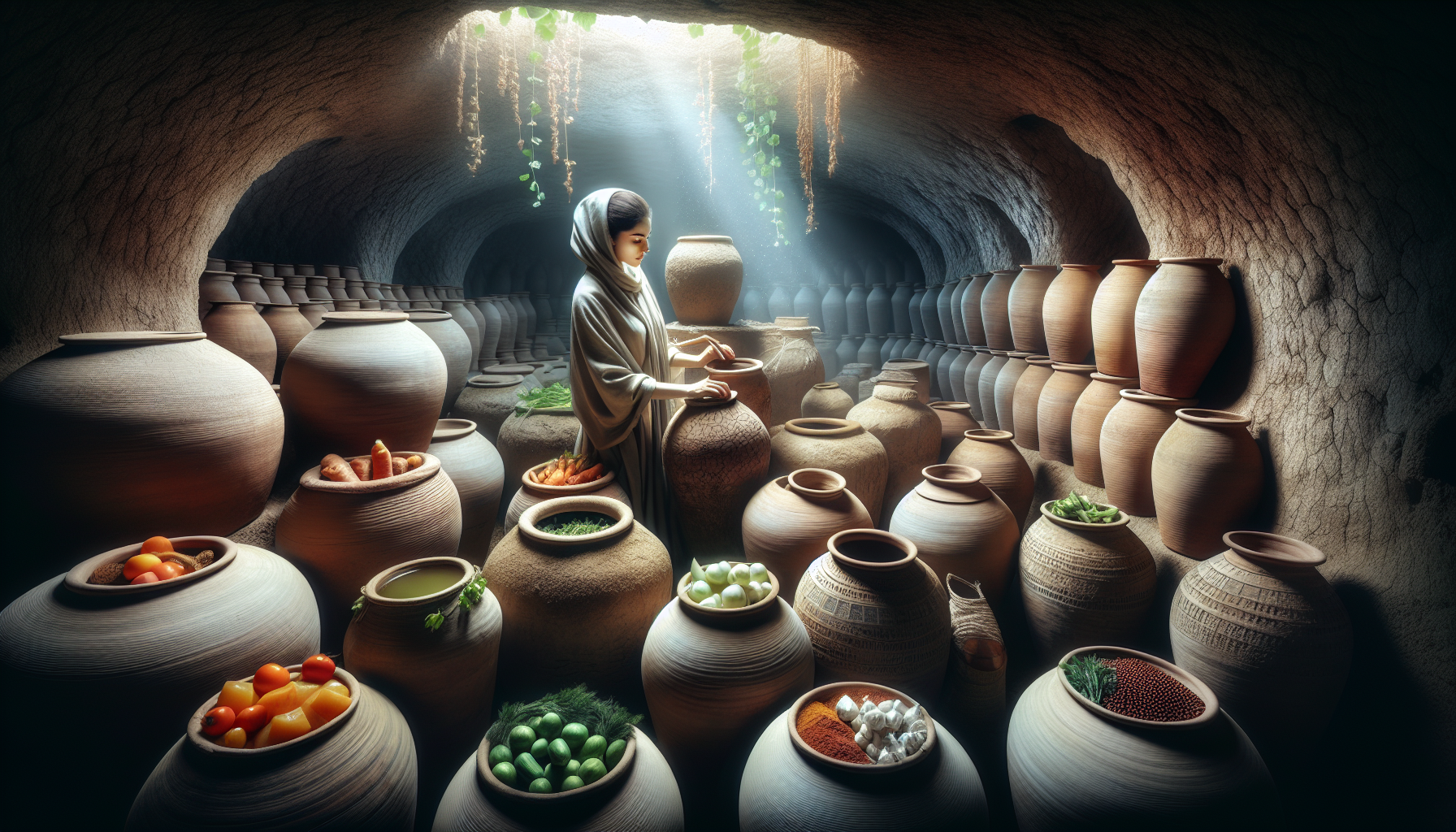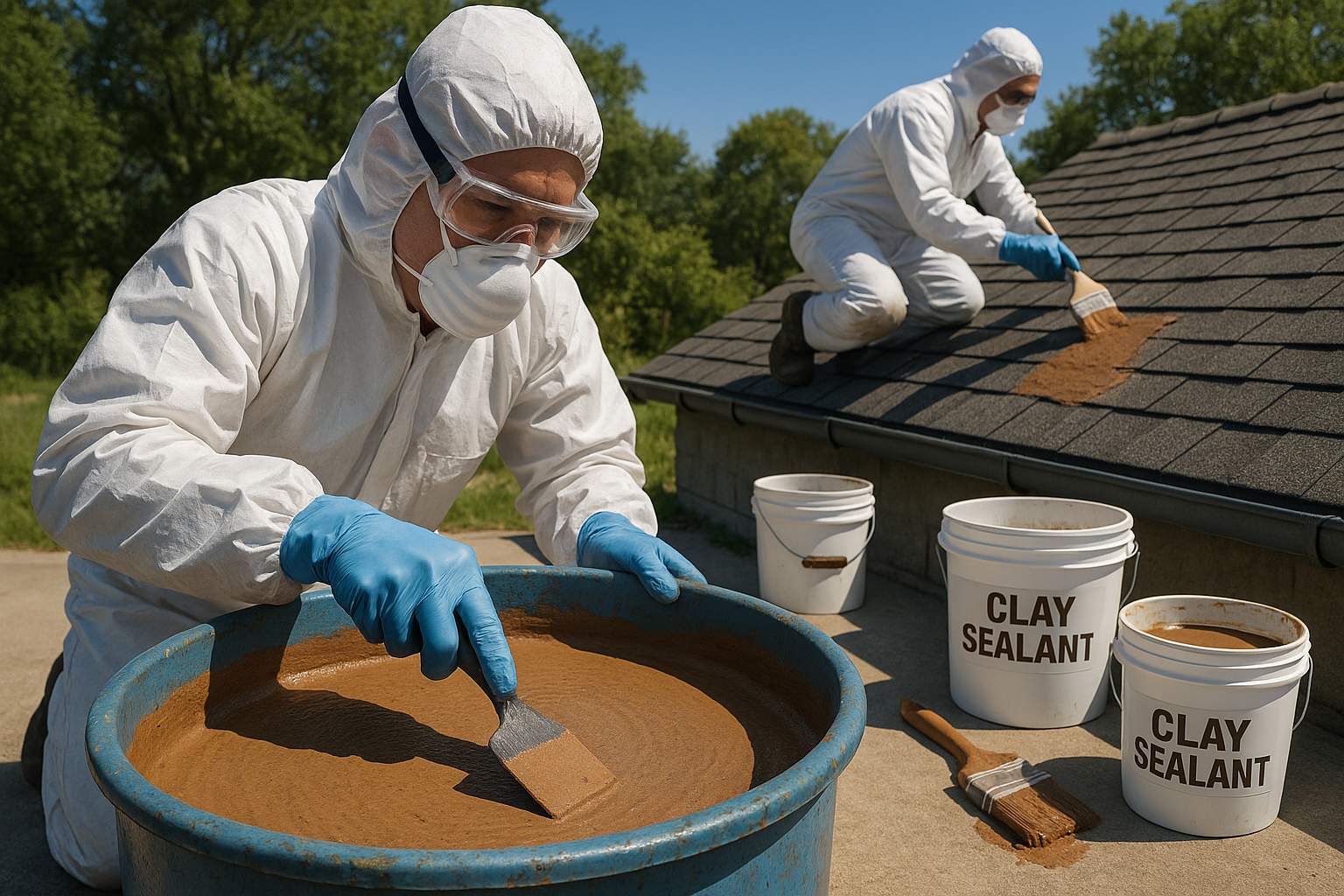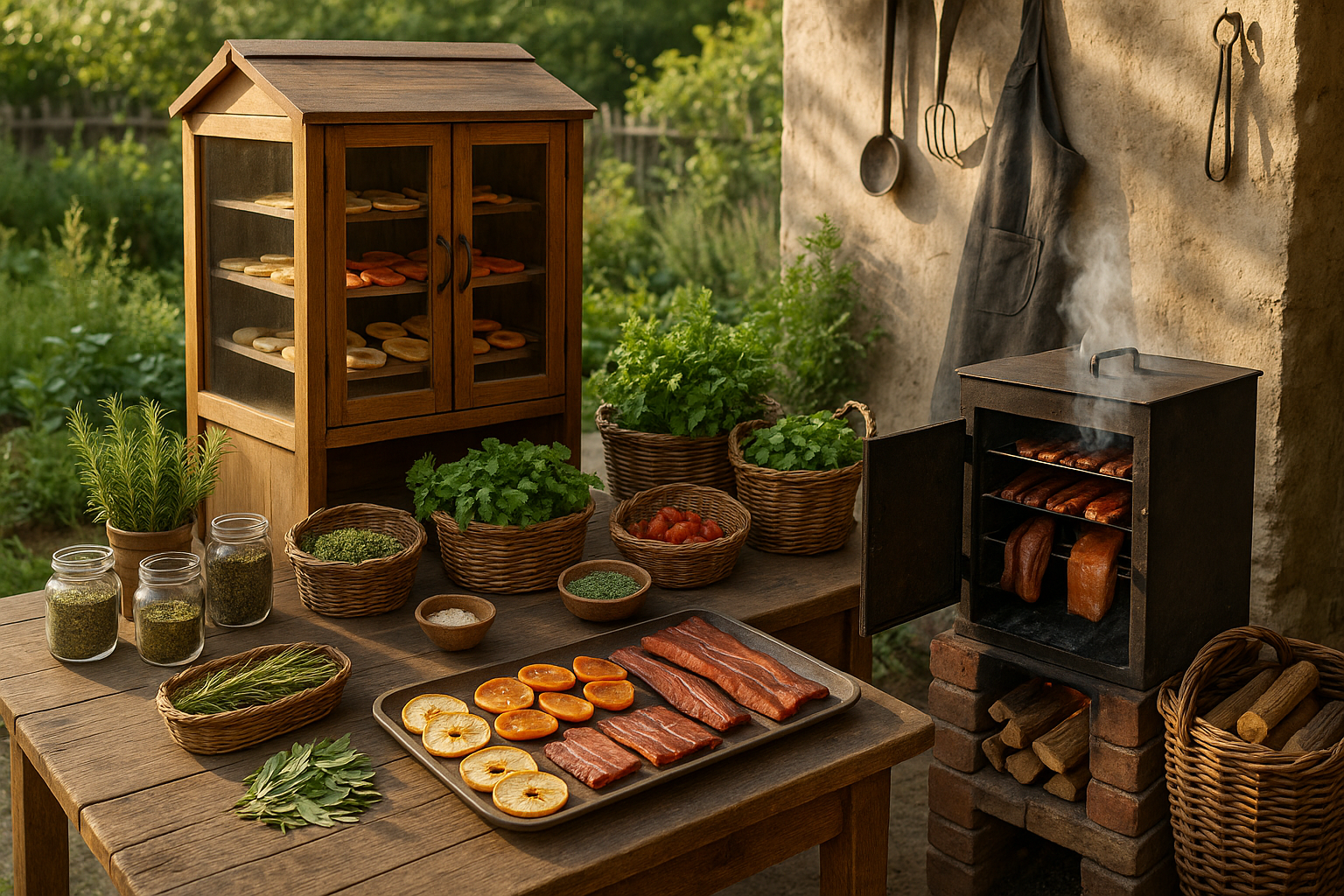In a world where culinary trends come and go, there lies a timeless tradition that remains largely undiscovered by the masses yet holds the potential to revolutionize how we perceive flavor and preservation. This ancient technique, known as subterranean fermentation in clay jars, is not just a method; it’s an art form passed down through generations, deeply rooted in the cultures that have harnessed its power. Imagine a process that not only transforms simple ingredients into complex and tantalizing delicacies but also connects us to our ancestors, who first unearthed these secrets. Welcome to the intriguing world of underground fermentation—a practice that promises to unleash flavors like never before and elevate your culinary experience to new heights. 🌿
At first glance, the notion of burying food in the ground may evoke images of forgotten relics or survival tactics from a bygone era. However, what if I told you that this primitive method holds the key to unlocking some of the most vibrant and intricate flavors that nature has to offer? By harnessing the earth’s natural temperature stability and the transformative properties of clay, this fermentation process creates a unique environment where magic happens. The science behind it is fascinating, involving a symbiotic relationship between microorganisms and the food they ferment. This results in profound changes in taste, texture, and nutritional profile—transformations that are simply unattainable through conventional means.
As we delve into the subterranean world, we’ll explore the various types of clay jars used in different cultures, each with its own unique properties and historical significance. From the Korean onggi to the Georgian qvevri, these vessels not only serve as functional fermentation tools but also embody the rich heritage and craftsmanship of the regions they originate from. We will uncover the secrets of how these jars contribute to the overall flavor profile and why their porous nature plays a crucial role in the fermentation process. By the end of this exploration, you’ll gain a newfound appreciation for these humble yet mighty containers and the skilled artisans who craft them. 🏺
Prepare to embark on a journey that will take you from the bustling streets of East Asia to the rustic vineyards of the Caucasus Mountains. Along the way, we will meet the passionate individuals who are keeping this tradition alive and explore modern interpretations of these age-old practices. We’ll also delve into the myriad of ingredients that can be fermented underground, from staple grains to exotic fruits, each offering a distinct taste adventure. By the time we resurface, you’ll be equipped with the knowledge and inspiration to try your hand at subterranean fermentation, armed with the tools to transform your kitchen into a gateway to the past and a beacon for future culinary innovation. 🍇
The Art and Science of Subterranean Fermentation
Subterranean fermentation in clay jars is an ancient culinary practice that has transcended time, providing a unique and earthy flavor to foods and beverages. This technique, rooted in various cultures around the world, leverages the natural properties of clay and the earth to create conditions ideal for the fermentation process. As we delve deeper into this fascinating method, we uncover its historical significance, scientific foundations, and modern-day applications.
Traditionally, fermentation has been a vital process in food preservation and flavor enhancement. The act of burying clay jars in the ground adds a distinct dimension to this process. The clay jars act as natural insulators, maintaining a steady temperature and moisture level that is crucial for the microbial activity required in fermentation. This method not only conserves the nutritional value of the food but also enhances its taste by infusing it with a unique terroir—a term often associated with wine, but equally applicable here.
Understanding the Fermentation Process
Fermentation is a metabolic process that converts sugar to acids, gases, or alcohol using microorganisms—yeasts or bacteria—under anaerobic conditions. In the context of subterranean fermentation, the environment created by burying the jars plays a crucial role in determining the outcome of the process. The soil provides a natural cooling effect, while the clay jar acts as a barrier to external contaminants, allowing only desired microorganisms to thrive.
Temperature control is vital in fermentation. The stable, cool environment of the earth is ideal for the slow fermentation process, which can last from several weeks to months, depending on the desired end product. This prolonged fermentation allows for a deeper development of flavors, as the microorganisms break down complex carbohydrates into simpler compounds, releasing a variety of flavors and aromas.
Moisture levels are equally important, as they affect the activity of microorganisms. Clay jars are naturally porous, allowing for a slow exchange of air and moisture, which keeps the environment inside the jar humid enough to sustain fermentation while preventing spoilage.
The Historical Context of Clay Jar Fermentation
The origins of using clay jars for fermentation can be traced back thousands of years. Archaeological evidence suggests that this technique was employed by ancient civilizations such as the Chinese, Greeks, and Romans. Each culture had its unique approach, yet the underlying principles remained the same: leveraging the earth’s natural properties to enhance and preserve food.
In ancient China, clay jars were often used to ferment soybeans to create soy sauce, a staple condiment in Chinese cuisine. The jars, buried underground, provided the perfect environment for Aspergillus mold to convert the soybeans and wheat into a complex mixture of flavors and aromas.
Meanwhile, in ancient Greece and Rome, clay jars, or amphorae, were used to ferment and store wine. The practice of burying these jars in the ground helped maintain a consistent temperature, crucial for producing wine with a rich and balanced flavor profile. This historical context highlights the ingenuity of ancient peoples in harnessing natural resources for culinary purposes.
Modern Applications and Innovations
In today’s culinary landscape, there is a renewed interest in traditional food preservation techniques, including subterranean fermentation. Chefs and food enthusiasts alike are exploring these methods to create new and exciting flavors. Modern technology has also been integrated into these ancient practices, with innovations such as temperature-controlled clay jars that mimic the natural underground environment.
Moreover, the concept of terroir, typically associated with wine, is being expanded to include fermented foods. By using local clay and soil, producers are creating unique products that reflect the characteristics of their region, much like a fine wine. This emphasis on locality and traditional methods appeals to consumers seeking authentic and sustainable food experiences.
For those interested in trying subterranean fermentation at home, there are numerous resources available. From online tutorials to workshops, aspiring fermenters can learn how to harness the power of the earth to create their own fermented masterpieces. Watch the video below for a step-by-step guide on how to get started with underground fermentation: How to Ferment in Clay Jars: A Beginner’s Guide (Video by Fermentation Lovers).
Benefits and Challenges of Subterranean Fermentation
The benefits of subterranean fermentation extend beyond flavor enhancement. This method is eco-friendly, as it relies on natural processes and materials. The use of clay, a biodegradable material, aligns with the principles of sustainability, making it an appealing option for environmentally conscious consumers.
Furthermore, the fermentation process itself offers numerous health benefits. Fermented foods are rich in probiotics, which promote a healthy gut microbiome. The consumption of such foods has been linked to improved digestion, enhanced immune function, and even mental health benefits. By choosing subterranean fermentation, individuals can enjoy these health advantages while savoring the unique flavors it imparts.
However, subterranean fermentation also presents certain challenges. The process requires careful monitoring of environmental conditions, including temperature and humidity, to prevent spoilage. Additionally, the initial setup—such as sourcing quality clay jars and finding a suitable location for burial—can be labor-intensive. Despite these challenges, the rewards of successfully fermenting food underground are well worth the effort.
Comparative Analysis of Fermentation Methods
| Method | Advantages | Disadvantages |
|---|---|---|
| Subterranean Fermentation | Rich, earthy flavors; eco-friendly; temperature stability | Labor-intensive; requires specific conditions |
| Open-Air Fermentation | Less equipment needed; simple setup | Inconsistent results; higher risk of contamination |
| Controlled Environment Fermentation | Precise control over variables; consistent results | Requires technology; higher cost |
As illustrated in the table above, each fermentation method has its unique set of advantages and disadvantages. Subterranean fermentation, while labor-intensive, offers unparalleled flavor profiles and an environmentally friendly approach that appeals to both traditionalists and modern culinary explorers.
Whether you are an experienced fermenter or a curious newcomer, exploring the art of subterranean fermentation can open up a world of possibilities. Dive into this ancient practice and discover the rich tapestry of flavors that await beneath the surface. 🌱

Conclusion
In conclusion, the exploration of subterranean fermentation in clay jars unveils a fascinating intersection between tradition, art, and culinary innovation. Throughout this article, we delved into the historical roots of this ancient technique, highlighting its origins in various cultures around the world. From the Korean kimchi pots to the Georgian qvevri used for wine, the use of clay jars buried underground has not only been a method of preservation but also a means of enhancing flavor profiles and creating unique gastronomic experiences.
We discussed the science behind subterranean fermentation, where the earth acts as a natural insulator, maintaining a consistent temperature and humidity level crucial for the fermentation process. This environment fosters the growth of beneficial bacteria and yeasts, which contribute to the development of complex flavors and aromas that are unattainable through other methods. The porous nature of clay also plays a vital role, allowing for a slow exchange of gases and liquids that enrich the fermenting product.
One of the key points emphasized was the sustainability and eco-friendliness of this method. In a time where environmental consciousness is paramount, the use of natural materials like clay and the reduction of energy consumption in fermentation processes present a compelling case for the resurgence of these age-old practices. By revisiting and modernizing traditional techniques, we can create a sustainable future that honors our past.
Moreover, the art of subterranean fermentation fosters a sense of community and cultural preservation. As we reconnect with these practices, we not only revive forgotten flavors but also the stories and traditions passed down through generations. This culinary revival allows for a deeper appreciation of cultural diversity and the shared human experience of food creation.
The sensory journey offered by these underground treasures is unparalleled. Imagine savoring a wine that has matured in the earth, capturing the essence of its surroundings, or tasting a kimchi that has developed layers of flavor over months of fermentation. These experiences not only delight the palate but also evoke a sense of wonder and curiosity about the world beneath our feet.
As we conclude this exploration, it’s essential to acknowledge the growing interest and experimentation in subterranean fermentation by chefs, home cooks, and culinary enthusiasts worldwide. This revival is not just about nostalgia; it represents a forward-thinking approach to gastronomy that embraces the past while innovating for the future. By integrating these techniques into modern culinary practices, we can push the boundaries of flavor and sustainability.
We encourage you, the reader, to embark on your own journey of discovery. Whether you are a professional chef, a home cook, or simply a lover of good food, consider experimenting with subterranean fermentation. Start small, perhaps with a clay jar and a patch of garden, and let nature guide your culinary creations. Share your experiences, successes, and even failures with your community, and contribute to the growing body of knowledge surrounding this ancient art.
In an era where technology often dominates our food systems, returning to the earth and embracing its natural processes can be both humbling and rewarding. Subterranean fermentation in clay jars is more than a technique; it is a testament to human ingenuity, resilience, and our intrinsic connection to the natural world.
We invite you to comment, share your thoughts, or reach out with questions about this intriguing topic. Your insights and experiences enrich the conversation and inspire others to explore the wonders of subterranean fermentation. Let’s continue to celebrate and innovate in the world of flavors, honoring our traditions while crafting a more sustainable and delicious future. 🌿
For further reading on this topic, explore resources such as The Art of Fermentation by Sandor Katz and delve into traditional fermentation methods.
Thank you for joining us on this flavorful journey underground. Let’s dig deep into the potential of clay jars and uncover the art of subterranean fermentation together. 🍶




